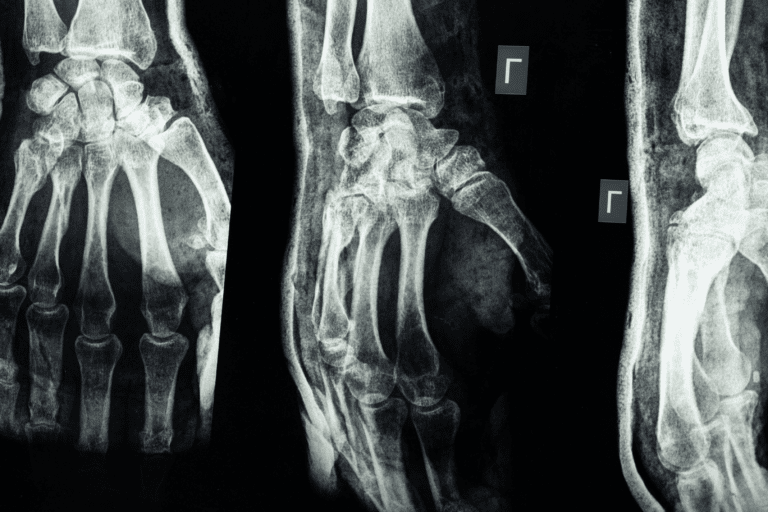A waiver of premium rider may be one of the smartest options to consider before you buy life insurance. But what is it, who needs it, and how much does it cost? Here’s everything you need to know about a waiver of premium rider and how to decide if this supplemental insurance makes sense for you and your family.
What is a Waiver of Premium Rider?
Whole life insurance guarantees a death benefit, and several living benefits, as long as your insurance policy premiums are paid. But what happens if you lose your income due to a disability, injury, or chronic illness? Your insurance policy is designed to protect you, but what protects your insurance policy?
A waiver of premium rider, also called a disability income rider, is a type of additional insurance that can be added onto a whole life insurance policy at the time of purchase to keep your policy in force should you become unable to earn income due to health reasons. It pays your insurance premiums for you, so you don’t have to choose between your family’s expenses now and your long-term financial goals.
A waiver of premium rider allows you to free up funds that would otherwise go toward policy premium payments to use for medical bills, cost of living, physical therapy, income replacement, or any other expenses associated with a sudden disability or illness.
In other words, a waiver of premium rider pays for your whole life insurance policy when you can’t.
Is a Waiver of Premium Rider Right for You?
As of 2010, the American Council of Life Insurers reported that 87% of all individual life insurance policies included a waiver of premium rider.
If your job comes with inherent risk, most insurance brokers and Wealth Strategists will tell you that, yes, you absolutely should consider adding this rider. Examples of high-risk careers include police officers, firefighters, pilots, bus and truck drivers, convenience store clerks, nurses, moving company employees, housekeepers, parking lot attendants, trash collectors, construction workers and waiters. The greater the chance you’ll be injured on the job, the riskier your career is considered to be by an insurance company.
Regardless of career type, the Council for Disability Awareness estimates 30% of people will become disabled at some point in their career before retirement. And 1 in 7 individuals will experience a disability period of 5 years or longer before they retire. This number grows even higher when accounting for chronic illness.
While you can’t know for sure if you will develop a serious illness or disability before you retire, your family health history and your current health are both indicators of potential risk. Issues you may face now, like prediabetes, heart or cardiovascular conditions, or being overweight can signify increased risk of chronic conditions or a disability down the road. They may also result in higher insurance policy premiums or render you ineligible for insurance, so it’s important to purchase a policy sooner, rather than later.
So, who determines eligibility for this rider? Some insurance companies develop their own rating list and others depend upon individual state insurance commissioners. Also, activities such as skydiving, scuba diving or bungee jumping may factor into your eligibility for the waiver of premium rider—and some states don’t offer it at all.
Because of the nature of this rider, the guidelines and regulations are very specific and may be quite different, company to company. However, here are some of the key features:
Waiting Period
There are two waiting periods that may apply surrounding your waiver of premium rider:
- When you purchase your policy
Once your insurance policy is in force, there is typically a waiting period before you become eligible to use your waiver of premium rider (or any benefit). If you become disabled or ill during this period, most insurance companies will refund your policy premiums and the policy will terminate.
2. When you become disabled or ill
Depending upon the insurance company, the waiver of premium rider benefit may not go into effect until 6 consecutive months after you become disabled or ill (but may go into effect as soon as 4 weeks). During this waiting period, called the elimination period, you must continue to pay your premiums but will be reimbursed after the elimination period ends.
For example, if you become disabled or ill in January you will have to pay your premiums through June (6 months). In July, you will be reimbursed for all premiums paid January through June.
Be sure to speak with your Wealth Strategist or insurance broker to understand your waiver of premium rider’s elimination period and what premiums you’ll be responsible for covering.
In the case of a disability, if the disability recurs, you do not have to repeat the elimination period unless it’s a different disability.
Length of Benefit
Most waiver of premium riders are available for policy-holders aged 18–60 and expire between age 60 and 70. The purpose of the waiver is to protect your income; after retirement, the waiver becomes unnecessary.
Cost of Rider
A waiver of premium rider increases the cost of your insurance policy, typically by about 10%. Depending on your insurer, your fee may be added to your annual, quarterly, or monthly premium payment, or you may be charged up front.
While the rider is usually inexpensive, it really depends upon your age, health, and your personal amount of risk. The cost of your rider will be determined during the insurance underwriting process, at the same time your policy premium is determined.
If you’re considering a waiver of premium rider and are concerned about cost, consider the costs associated with your policy lapsing, which is more likely to happen if you become injured, ill, or disabled without a waiver of premium rider in place.
How a Waiver of Premium Rider Pays Benefits
If you become disabled, seriously injured, or chronically ill, you’ll need to file a claim for waiver of premium rider benefits. You’ll also need a letter from your doctor and, in the case of a disability, a notice from the Social Security Administration. Once claim requirements and any potential elimination periods are satisfied, your insurance company will start paying your policy premiums—and pay back any premiums you paid during your elimination period.
Your waiver of premium rider benefit is paid by tapping into funds from your death benefit. This may reduce the amount of death benefit paid to your beneficiaries when you pass away, so it’s important to have clear financial goals in place before you purchase your insurance policy and any associated riders.
If your primary reason for buying life insurance is to leave a financial benefit for your family when you pass away, using a waiver of premium rider might not be the best option. You may want to consider additional disability insurance instead.
However, if your primary reason for buying life insurance is to use it for infinite banking and to grow wealth while you’re still living, a waiver of premium rider essentially protects your own personal bank—keeping it open even when you can’t work. These types of life insurance policies are cash value policies—usually whole life policies from a mutual life insurance company—where a lapsed policy would not only terminate any death benefit, but also have tax implications on growth of cash value, decreased liquidity and cash flow, and consequences for asset protections.
Waiver of Premium Rider FAQs
Q. What types of life insurance can include a waiver of premium rider?
A. A waiver of premium rider may be added onto term life insurance policies and all types of permanent life insurance, including whole life insurance and universal life insurance, provided the rider is offered by the insurer, the insured is eligible, and the rider is added at the time the policy is purchased.
This type of rider is typically considered more beneficial for insurance policies with higher premiums, like whole life insurance. Term policies typically have very inexpensive monthly premiums, and for many families, continuing to pay premiums even without income for several months, wouldn’t be a huge financial hardship.
Q. How disabled or ill do you need to be to qualify for a waiver of premium rider benefit?
A. Qualifications for waiver of premium rider benefits vary by insurance company. Examples may include hospital says longer than 6 consecutive months or disabilities or illness that prevent you from working, of which there are two classifications:
Own-Occupation Disability Benefit: Your insurance company pays out a benefit if you can’t work in the same field you were working in when the disability or illness occurred.
Any-Occupation Disability Benefit: Your insurance company pays out a benefit if you can’t work in any field.
Be sure to speak with your Wealth Strategist or insurance broker to understand your benefit and when you will be eligible.
Q. Can I file more than one claim?
A. Yes. You can file claims repeatedly with a waiver of premium rider, provided you have the proper documentation (like a doctor’s note and notice form the Social Security Administration), you are still within the outlined length of benefit term (typically before 60 years old), and your disability or illness meets your insurance company’s qualifications.
If your claim is for the same disability, you don’t have to complete a second elimination period before receiving benefits.
Q. Once a claim is filed, when do benefits end?
A. In most cases, your waiver of premium rider benefits will continue until age 60–70, or until you are able to go back to work, whichever happens sooner.
Q. What alternatives are there to a waiver of premium rider?
A. Aside from a waiver of premium rider, you may wish to purchase separate disability insurance, which provides income replacement in the event you become disabled. There are also a couple of other life insurance riders you might want to consider adding to your policy:
Accelerated Death Benefit Rider: Pays a benefit in the event the policyholder is diagnosed with a terminal illness.
Long-Term Care Rider: Pays a benefit in the event the policyholder needs long-term care not covered by medical insurance or other government assistance, like for a nursing home or home hospice care.
A waiver of premium rider is both popular and of great benefit to anyone who might need it, especially if you’re considering a whole life insurance policy for the purpose of infinite banking. In the event of injury or illness, this rider could make the difference for yourself and your family to maintain coverage, plus the associated liquidity, cash flow, asset protections, and tax benefits offered with a whole life insurance policy.
Conclusion
At Paradigm Life we can customize a policy to fit your financial situation. Our expert Wealth Strategists are available to answer your questions and show you customized illustrations, outlining an individual plan of action to help you achieve your goals.  , no strings attached.
, no strings attached.







